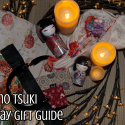One of the questions I most often get asked when I go out in kimono is “Where do you get them?!” and nearly invariably, the answer is “the internet.” If you’re reading this blog, clearly you are familiar with this magical and wonderful tool, but over the years I’ve amassed a few useful tips and tricks that I thought it might be worthwhile to share. This will be a series of posts, each discussing different online vendors and shopping methods.
![]() Today I’ll be talking about everyone’s favourite time (and money) waster, eBay. Please note, that link heads to eBay USA. Even if you’re elsewhere in the world, most sellers tend to list the bulk of their items here and they may not show up on international sites. However, don’t forget to factor in shipping costs and customs. That 99-cent bargain may not be so much of a bargain when you have to pay $40 in shipping.
Today I’ll be talking about everyone’s favourite time (and money) waster, eBay. Please note, that link heads to eBay USA. Even if you’re elsewhere in the world, most sellers tend to list the bulk of their items here and they may not show up on international sites. However, don’t forget to factor in shipping costs and customs. That 99-cent bargain may not be so much of a bargain when you have to pay $40 in shipping.
“But Diane,” you might say, “I already know about eBay!” Aah, but do you know about all the weird places and terms to go by? If you’ve already looked around here, you’ll know that doing a blanket search for “kimono” will turn up myriad results, a lot of them being tacky toys, polyester bathrobes, and questionable personal hygiene products (I am constantly coming across a particular brand of prophylactic in my never-ending hunt for kimono online). Your best place to start is in the several kimono-specific category leaves eBay already has conveniently set up.
- Collectibles – Cultures & Ethnicities – Asian – 1900-Now – Japanese – Kimonos: Pretty cut and dry here, this is the primary category leaf specific to kimono. The majority of the reputable Japanese sellers post their items in here.
- Collectibles – Cultures & Ethnicities – Asian – 1900-Now – Japanese – Obis: Again, very straightforward. The Obi-specific category, most of the Japan-based sellers list obi and obi accessories here. One seller always lists all their Buy It Now items in this category, including kimono.
- Antiques – Asian Antiques – Japan – Kimonos & Textiles: This category gets a painful number of chopped up pieces of kimono, but it often gets some pretty good deals on full kimono and accessories too.
- Collectibles – Cultures & Ethnicities – Pacific Islands: This one is a bit of a craps shoot. Sometimes it turns up nothing whatsoever, but sometimes it turns up absolute gems. It was in this category that I found my black vintage bridal furisode at a total steal, most likely because people don’t look in this category often enough.
These categories are great if the seller knows what they have, but often times people inherit things or receive them as gifts, and have no real idea what they’ve got. Here’s a quick list of alternative spellings or terminology that I’ve seen turn up some real gems. Caveat emptor though – sometimes complete and utter garbage will be listed using these terms too.
- Kimono: Kimona, Komono, Komona, Kemono, Geisha dress, Geesha dress, Japanese dress, Japanese robe (you may feel dirty and ashamed typing some of these out, but the potential bargains are worth it, I promise)
- Obi: Obie, obe, obee, oby, Japanese belt, Japanese sash, Japanese table runner (this one made me cringe!). One person I know found an obi and a Biyosugata (obi-tying aid) together listed as “Japanese dress bustle.”
- Obiage: Obi shawl, obi scarf, Japanese shawl, Japanese scarf
- Obijime: Obi tie, obi cord, Japanese cord
- Obidome: Obi brooch, obi clasp, obi jewelry, Japanese brooch, Japanese jewelry
- Zori & geta: zohri, zouri, getta, gettah, getah, Japanese sandals, Japanese kimono shoes
- Haori & Michiyuki: Kimono coat, kimono jacket, short kimono, hoari, haory, happi coat (Happi coat are actually another type of garment – casual cotton with short sleeves and often a logo or character on the back, but haori often get mis-listed this way)
- Uchikake: Utikake, Uticake
If you’re still relatively new to the hobby and want to make sure what you’re buying is legitimate, there are a few “tried and true” sellers of kimono and related who are all based in Japan and have consistently good track records of making beautiful, affordable, and sometimes very rare items available to the western market.
Apr Japan does the majority of their listings as Buy It Now (BIN), with the ability to make an offer – don’t hesitate to use the Offer feature, they will generally accept fair and reasonable ones. They’ve got a ton of vintage pieces and are very thorough about showing any damage.
BabyMoti offer up lots of cute, casual kimono and yukata at great Buy It Now prices. Quality and condition aren’t always stellar, but the items are always wearable.
Ichiroya is probably one of the big heavy-hitters in online sales. They don’t sell on eBay as much as they used to, focusing more on their own website but when they list items, it’s definitely worth a look.
Japanese.Antiques offer up a good variety of vintage and modern items, both auctions and BIN. They also always have a ton of accessories up, usually as BIN sales, and they do really great combined shipping, so if you win an auction from them it’s definitely worthwhile to browse and possibly pick up a few extra items.
MKZStudio sells new yukata, geta, and casual obi. Prices are not the most affordable, but are still very competitive for brand new items direct from Japan.
RyuJapan is a seller who’s been around forever, always has amazing vintage pieces, and is a pleasure to deal with. He tends to post massive floods of listings all at once, so if you see a piece or two listed that you like, it’s worthwhile browsing the rest of his listings. (*UPDATE – RyuJapan has merged with another seller, Shinei, and there have been reports of a drop in service quality. I have not experienced problems with either of these sellers myself, but I thought it was worthwhile mentioning. 01/30/11)
Tokyo Trend has a lot of BIN items at very affordable prices. Note that their listing thumbnails only show a close-up of the item – these are not pieces of fabric, they are full kimono, so be sure to check the listings carefully!
Yamatoku Classic offer up a great balance of modern items and vintage ones for great prices (often lots of Buy It Now items), and have been in business for a very long time. My first ever obi was purchased from them.
This list is by no means complete or concrete. Sometimes amazing bargains are to be had by finding sellers other people aren’t familiar with, and being willing to take a risk.
Now that you know what categories to browse, and what words to search for, your best bets are to sort the results by Newly Listed and flip through there, and then sort by Ending Soonest and be sure to browse there – it’s a great way to snag some last-minute deals! If you’re on a budget, a great way to prevent getting too caught up in auction madness is to stick solely to the Buy It Now tab. There are often really affordable and cute items in there. I find a good way to prevent succumbing to silly impulse buys (“It’s a buy it now! And it’s cheap! I don’t care if it’s ugly!”) is to stick to the Buy It Now category and only look at the thumbnails. If something jumps out at you, then you can check the price and decide if you really want it or not!
I hope you enjoyed my first shopping hints post, stay tuned for the next one, where I’ll discuss the Japanese answer to eBay, Yahoo Japan Auctions.
*Please note that I am not affiliated with any of the above sellers, nor am I remunerated in any capacity for promoting them, but in the interest of fair disclosure I openly admit that I have occasionally gotten small free gifts from some of the above sellers. However this seems to be standard business practice for a lot of them to thank regular customers or people who spend a significant amount.*















 Bebe Taian
Bebe Taian CHOKO Blog
CHOKO Blog Gion Kobu
Gion Kobu
Thanks for sharing such beautiful information with us. I hope you will share more info like this. Please keep sharing.
I’ve actually recently found yet another biyosugata listed as a “kimono bustle”…on Craigslist, of all places. So perhaps it is not as singular misconception as I once thought?
Nice article! To add another tip, check out the Japanese romanizations using the alternate romaji system they have (like the utikake vs. uchikake you’ve got). Geisya vs. geisha, hurisode vs. furisode.
Basically things like any “chi” is written instead as “ti”, any “sha” as “sya”, any “fu” as “hu”, and any “jou/jo” as “jyo”. It’s not as popular as the system we’re using to seeing, but I’ve seen items on occasion using it.
Thanks, this is a good one! May I add it to the article?
Unbelievable how well-written and inrfotmaive this was.
Diane, …you are amazing…thank-you for clarifying what seemed like a very complicated process to me!!!
No problem! I’m glad it makes sense to you 🙂